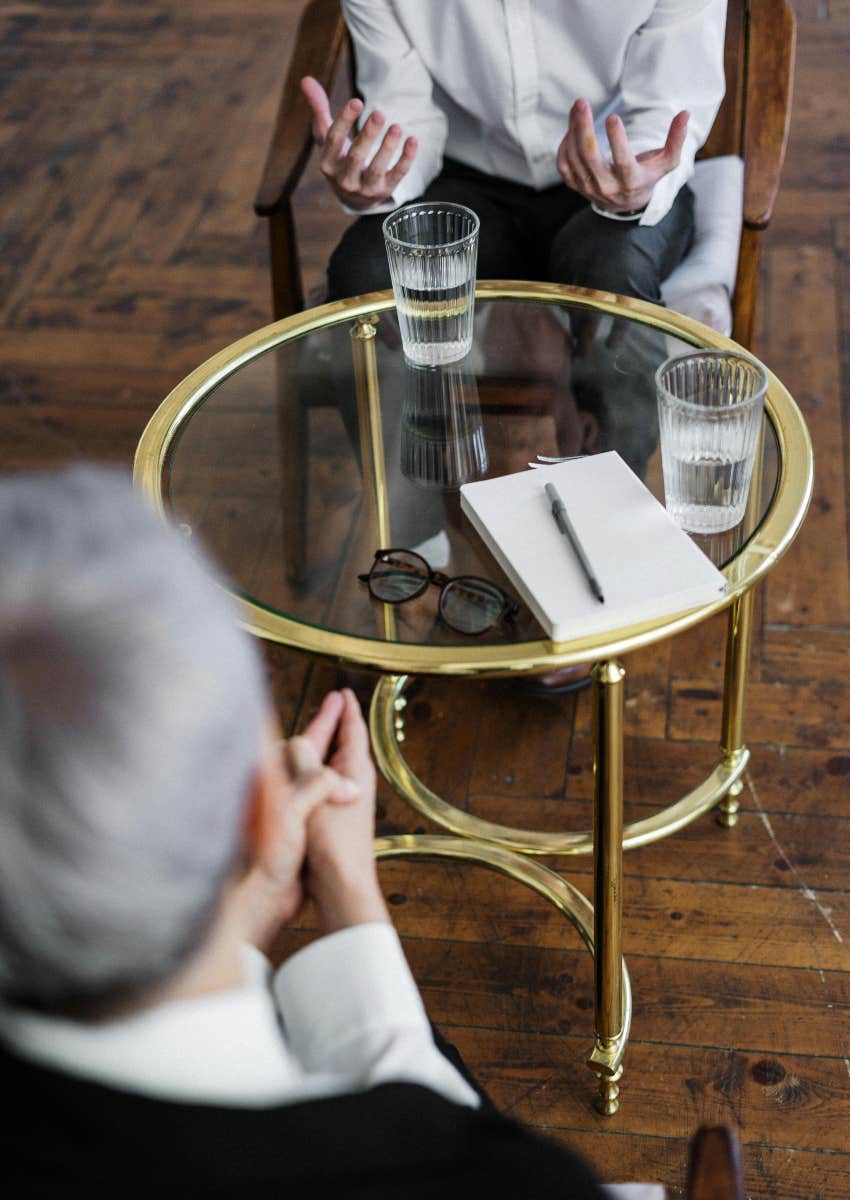Your partner is vibrant, fun, and happy during the holiday season. But, when January arrives, they become chronically on edge, exhausted, and feel depressed.
Over the years, many puzzled clients have complained to me, “I don’t get it! I’m the same person I was during the holidays but comparing life with my partner in December and January is like watching the movie about ‘The Strange Case of Jekyll and Hyde’.”
Or, they say, “I feel like I’m living with a different person! In December, we had fun at holiday parties, got some rest, and enjoyed friends and family. After the holidays, everything seemed to change. What causes a partner who is normally full of zest to become pessimistic, moody, and have such low energy that they don’t even try to have fun?”
If your relationship tends to get rock when it gets cold, your partner may be suffering from Seasonal Affective Disorder or the winter blues.
 Dương Nhân / Pexels
Dương Nhân / Pexels
Clinically known as Seasonal Affective Disorder (S.AD), only 6 percent of the U.S. population suffers from this seasonal depression in its most marked form and another 14 percent of the adult U.S. population suffers from a lesser form of seasonal mood changes.
Your partner may be constantly asking themselves, “Why am I so sad? Am I depressed?” When one partner is fatigued or feels down in the dumps for days on end, the entire relationship usually suffers. This is especially true when seasonal depression sufferers don’t understand what’s causing the issue, feel hopeless, or withdraw from the kind of social interaction or activities required to solve the problem.
Too many people who endure winter depression never comprehend their power to elevate their emotions with simple lighting, activity, dietary, and other lifestyle changes.
Why are some people more susceptible to S.A.D. than others? Eons ago, humans lived more like animals. We instinctively slept a lot during cold winter months — the season of short daylight — and there are good reasons for this.
Most people fatigue more easily during the winter months. Sunshine is a rich source of physical energy for our bodies.
In the old days, when daylight decreased as winter increasingly wrapped the Earth in a series of cold, cloudy blankets, we listened to our bodies. We curled up in our caves and snored blissfully until body sensations compelled us to leisurely stretch into full awakening.
As we evolved, electricity became available and we entered the industrial age, we dramatically changed our habits. We began ignoring more and more of the laws of nature.
Today, people are jolted awake by alarms, often when it’s still dark outside, and stumble to turn on bright lights so they can stagger to a coffee pot to convince themselves they’re awake. They also struggle to complete computer projects at night and stay up late playing video games, both of which emit light that can stifle healthy sleep patterns.
In this modern era, we can even go to the gym at night and perform athletic activities in well-lit areas. All of these activities can confuse and reset our internal clocks to the extent that our natural, appropriate relationship with melatonin (our naturally occurring “sleep hormone”) is disturbed. When our bodies function in a normal balanced state, melatonin lets us know when it’s time to sleep, wake, and eat.
With S.A.D., our melatonin levels are increased and we don’t sleep well. When does S.A.D. visit your relationship? S.A.D. and the winter blues are both associated with reduced sunlight, inadequate indoor lighting, and increased melatonin levels.
S.A.D. symptoms are not only related to blue moods.
 Pavel Danilyuk / Pexels
Pavel Danilyuk / Pexels
They can create health problems because common symptoms include daytime fatigue, sugar binges, carbohydrate craving, weight gain, lethargy, lack of interest in normal activities, and social withdrawal.
Most S.A.D. sufferers say they hate to get out of bed in the morning because they don’t feel rested. Since common S.A.D. symptoms include moodiness, trouble sleeping, problems getting along with other people, intimate problems, hopeless feelings, low motivation, difficulty concentrating, withdrawal from social situations, and fatigue, it’s clear that S.A.D. and the winter blues can potentially attack a healthy relationship.
The good news is that there are many proven ways to disable S.A.D. and the winter blues while bolstering your relationship health and happiness. Remember that S.A.D. is different from serious clinical depression, which can occur all during the year. Although both S.A.D. and serious clinical depression can occur during winter months and some symptoms are similar, S.A.D. is a seasonal, fairly predictable disorder related to the external environment and weather.
If your partner is suffering from S.A.D., awareness, and an effective game plan are imperative.
 cottonbro studio / Pexels
cottonbro studio / Pexels
When do you seek professional help for your depressed partner? If your partner’s winter blues or S.A.D. is seasonal, design your action plan now. Your geographic area will influence the emergence of S.A.D. If you are in a northern climate, S.A.D. symptoms may occur as early as autumn. If you are farther south, symptoms may not appear until winter.
Either way, a basic guideline for S.A.D. is that symptoms emerge when weather changes signal a seasonal shift toward winter. Most importantly, the symptoms dissipate in spring and summer.
If you think your partner’s symptoms may indicate clinical depression, consult a doctor or a qualified therapist. Although some people require medication, studies show that cognitive behavioral therapy (CBT) and other alternatives often manage S.A.D. symptoms just as well or better, without negative side effects.
Can you turn your partner’s S.A.D. into glad? Although it’s easy to see how the vibrations of S.A.D. can temporarily rip the glad vibes from your relationship, it doesn’t have to control you, your partner, or your partnership. Since S.A.D. can be reversed now and prevented before the next S.A.D. season, both of you can use your S.A.D. experience as a tool to make your relationship stronger in the long term.
Truly open communication is essential if you decide to embrace this challenge. You need to thoughtfully consider the roles you’re willing to play and openly discuss this with your partner so you avoid misunderstandings, resentments, and other unpleasant surprises as you attempt to be supportive.
Some SAD solutions are relatively simple, like:
- Selecting the right light box to use as phototherapy at home or work.
- Changing light bulbs has proven to alleviate S.A.D. symptoms.
- Planning a winter vacation in a sunny climate.
Other essential strategies can be more challenging, like:
- Rate your ability to talk to a partner who wants to stay indoors when they should go outdoors in sunny, cold winter weather.
- Encourage a partner with an increasingly introverted personality to go to a winter party or family gathering when they want to withdraw from a more active social life.
- If your partner prefers eating sugary junk foods and a high-carbohydrate diet, intend to help them become self-motivated to eat foods that inhibit S.A.D. Research from Harvard University states that a Mediterranean diet has been proven to help fight depression.
- Figure out your skills regarding convincing a partner who normally hides their feelings and doesn’t reach out for assistance to be vulnerable enough to express their emotions and needs and ask for help.
Your partner’s S.A.D. will not disappear when they go to work. Symptoms like low motivation, relationship difficulties, performance problems, energy slumps, and difficulty in focusing will usually become more pronounced when your partner tries to work.
You’ll both need to be prepared for this challenge because S.A.D. can sabotage a career if your partner is unaware of what is happening and why. Even though it’s not easy, you can consciously use each S.A.D. challenge in your relationship to strengthen your partnership.
You need accurate information and proven strategies. Relationship coaching can also help you discover every tool you need to succeed in the adventure of helping your partner graduate from their winter blues.
If you or somebody that you know is experiencing a mental health crisis, there is a way to get help. Call SAMHSA’s National Helpline at 1-800-662-HELP (4357) or text “HELLO” to 741741 to be connected with the Crisis Text Line.
Doris Helge, Ph.D., is an award-winning, Certified Master Leadership and Relationship Coach for the last 25 years.

